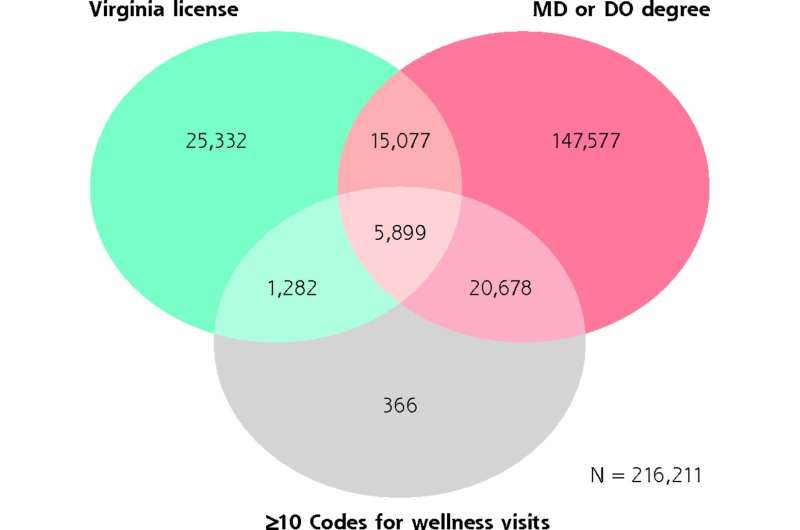Venn diagram for identifying the 5,899 members of Virginia’s active primary care workforce in 2019. DO = doctor of osteopathic medicine; MD = doctor of medicine; VA-APCD = Virginia All-Payer Claims Database. Notes: Diagram based on all active clinicians in Virginia in 2019 (as determined from ≥1 claim in VA-APCD database). Top left (blue) includes 25,332 clinicians who held a Virginia license. Top right (orange) includes 147,577 physicians who had an MD or DO degree. Bottom center (gray) includes 366 clinicians likely serving in a primary care capacity as ascertained from wellness visit claims, but who did not hold a Virginia license and did not have an MD or DO degree. Credit: The Annals of Family Medicine (2022). DOI: 10.1370/afm.2854
Health care stakeholders have long relied upon the American Medical Association's Masterfile to identify physicians who practice primary care medicine.
This approach has proven problematic because the AMA does not differentiate physicians with primary care training from physicians who practice true primary care.
As a result, estimates of U.S. primary care capacity are inaccurate, at best. To ensure an adequate primary care workforce in the future, stakeholders must use data that accurately reflects which physicians (and other clinical staff) provide primary care.
In this new study, researchers point to alternative data that can be used to accurately assess and predict future workforce needs.
The research is published in The Annals of Family Medicine.
More information: Alison N. Huffstetler et al, Using State All-Payer Claims Data to Identify the Active Primary Care Workforce: A Novel Study in Virginia, The Annals of Family Medicine (2022). DOI: 10.1370/afm.2854
Journal information: Annals of Family Medicine
Provided by American Academy of Family Physicians
























